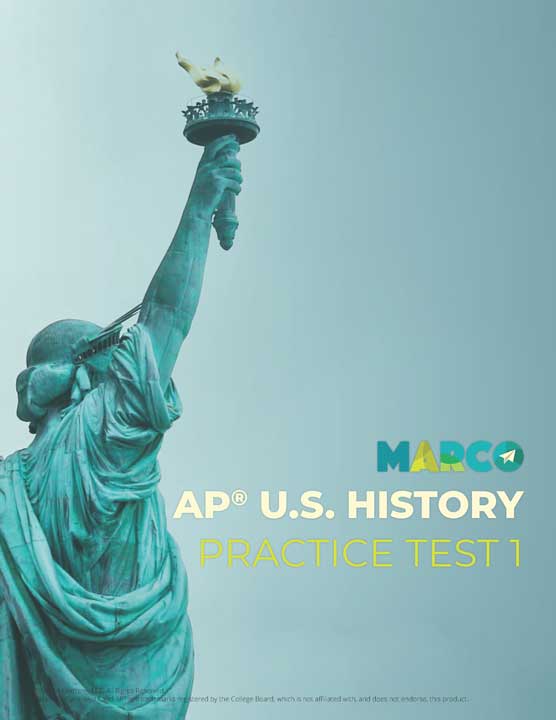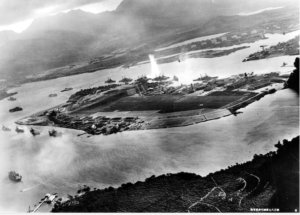


Unit 7 in the APUSH Exam
This time period extends from 1890 to 1945 and counts for 17% of recommended instructional content for an AP class.
KEY CONCEPT 7.1
Growth expanded opportunity, while economic instability led to new efforts to reform U.S. society and its economic system.
KEY CONCEPT 7.2
Innovations in communications and technology contributed to the growth of mass culture, while significant changes occurred in internal and international migration patterns.
KEY CONCEPT 7.3
Participation in a series of global conflicts propelled the United States into a position of international power while renewing domestic debates over the nation’s proper role in the world.
OVERVIEW
During this period, the Second Industrial Revolution continued to affect the fabric of U.S. society in deep and lasting ways. More people lived in the cities than in the countryside for the first time in U.S. history. Cities were overcrowded, dangerous, and politically corrupted. Progressives tried to reform urban conditions through a combination of social measures and government action.
Most of these reformers were women, but the individual causes supported by Progressives were incredibly varied. Some supported specific social issues such as prohibition. While others advocated for immigration or women’s suffrage.
The Progressive Era was helped by “muckraker” journalists who widely publicized the difficult conditions faced by immigrants, the urban poor, and the disenfranchised. Upton Sinclair’s The Jungle and Jacob Riis’s How the Other Half Lives are two of the strongest examples of this approach.
“I pledge you, I pledge myself, to a new deal for the American People.”
—President Franklin Roosevelt, 1932
While addressing these social issues, the United States was also struggling through the Great Depression. President Roosevelt addressed the rising unemployment and social upheavals by developing a limited welfare state under his New Deal program. The New Deal used government power to end the depression through a combination of direct aid, employment aid, and infrastructure spending. Large portions of the program were eventually overturned, although some— like social security—remain to this day.
AP U.S. History Period 7 includes the incredible changes in technology and society that took place in the early twentieth century. During this time period. Mass entertainment like movies helped create a sense of shared culture. Harlem Renaissance authors created a new, distinctly African American movement. Sports such as baseball became part of the national identity. Americans were becoming increasingly united through entertainment, literature, and media.
All of these changes in U.S. domestic policy and society took place against a backdrop of increasing U.S. involvement in international affairs. Some parts of the U.S. population, called imperialists, felt that the United States should lead the world through a combination of geographic spread, military strength, and ideological adherence to the principles of democracy. They were opposed by anti-imperialists, who felt that countries should have the right of self-determination. By the time Woodrow Wilson argued that the United States should enter World War II on humanitarian grounds, the debate had been going on for decades! The United States retreated into relative isolation after that experience. They were only drawn into World War II after the Japanese attack on Pearl Harbor. After the allied victory in World War II, the United States rose to a position of international dominance.

Aerial photo taken by a Japanese air carrier of Pearl Harbor bombings in 1941.
TIMELINE
1898 The United States annexes the Philippines, Puerto Rico, and Guam.
1917 The United States enters World War I.
1920 The Nineteenth Amendment was ratified, extending suffrage to women.
1929 The U.S. stock market crashed dramatically over a period of five days.
1933 The Twenty-first Amendment was ratified, repealing the Prohibition.
1935 President Roosevelt signed the Social Security Act.
1941 Japanese planes attacked American naval bases at Pearl Harbor.
1942 President Roosevelt signs Executive Order #9066 to remove Japanese Americans to internment camps.
KEY TERMS
Second Industrial Revolution A movement toward manufacturing, especially in the North, that transformed the United States from an agricultural economy to an urban economy.
Progressive A term applied to people who tried to implement social programs and increase government spending to address social inequalities.
Great Depression A period of economic decline that severely affected U.S. society and politics.
New Deal A wide-ranging government approach that addressed the Great Depression through a combination of government-funded infrastructure projects, social programs, and relief aid.
Harlem Renaissance An African American artistic movement in the 1920s that created art, music, and literature based on the lived experience of being African American in the United States.
The best way to get better at something is by practicing.
That’s why it’s so important that you take practice tests to help you get better at the AP U.S. History Exam. Only then can you expect to get a good score—and even improve your score.
Download your free AP® U.S. History practice test HERE.
Download your printable study guides for all of the units for AP U.S. History HERE.
 Help
Help